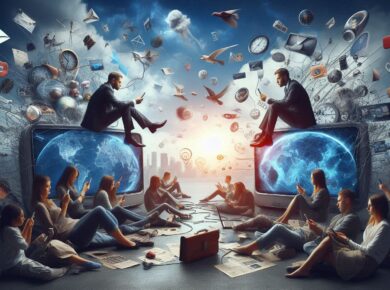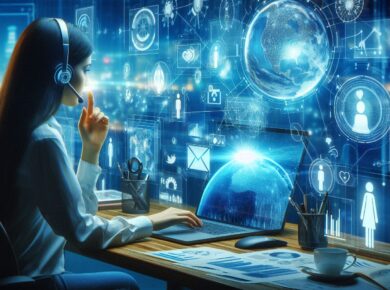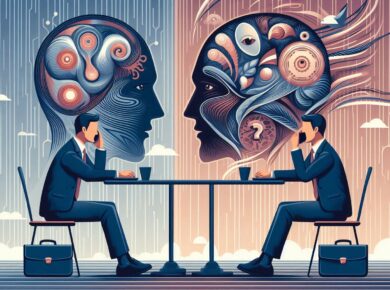Table of Contents
- The Early Days: The Age of Letters
- The Invention of the Telegraph: The Dawn of Instant Communication
- The Rise of the Telephone: Bringing Voices Across Distances
- The Advent of Radio and Television: The Mass Media Era
- The Internet and Email: The Start of Digital Communication
- The Arrival of Mobile Phones: Communication on the Move
- The Era of Social Media: The Global Connection
- Modern Instant Messaging Apps: Real-Time, On-Demand Communication
- The Future of Communication: What’s Next?
- Conclusion
Communication has always been at the heart of human connection, bridging distances, and building relationships. From ancient scrolls to the latest digital messaging apps, the journey of communication methods reflects our quest to connect faster and more effectively. This article explores how communication has evolved through the ages, from the time-intensive days of letter writing to today’s instantaneous digital messaging.
The Early Days: The Age of Letters
The written letter was one of the earliest forms of long-distance communication. For centuries, letters allowed people to share news, express emotions, and conduct business across vast distances.
The Importance of Letters in History
Letters were more than just messages; they were records of history and emotions. Wars, royal decrees, personal relationships, and political strategies were often documented through letters. Famous examples include letters between soldiers and their loved ones during wars or influential correspondences like those between philosophers and scientists.
- Emotional Impact: Letters often carried a personal touch, with handwriting reflecting the writer’s personality.
- Preservation of History: Letters left a historical record of social, political, and cultural norms of the time.
Limitations of Letters
While letters were invaluable, they had their challenges.
- Time-Intensive: Delivering a letter could take weeks, months, or even years depending on the distance.
- Dependence on Messengers: Letters relied on couriers, ships, and later postal services, each with its delays and risks.
The Invention of the Telegraph: The Dawn of Instant Communication
The 19th century introduced a breakthrough in communication with the invention of the telegraph. For the first time, messages could be sent quickly across great distances without a physical letter.
How the Telegraph Changed Communication
The telegraph transformed communication by enabling people to send coded messages instantly via Morse code.
- Instant Transmission: Messages could now cross oceans in seconds.
- Impact on Business and News: Businesses could make decisions in real-time, and newspapers began reporting events as they happened.
Limitations of the Telegraph
Despite its speed, the telegraph had its limitations:
- Code Dependency: Messages had to be short and coded, limiting the details.
- Infrastructure Requirements: Telegraph lines had to be built, which was costly and limited availability in remote areas.
The Rise of the Telephone: Bringing Voices Across Distances
In 1876, Alexander Graham Bell’s invention of the telephone revolutionized communication once again, allowing people to hear each other’s voices from afar.
How Telephones Changed Personal and Business Communication
With the telephone, people could have real-time conversations without being in the same room, making long-distance relationships and business operations easier.
- Human Connection: Voices conveyed emotions, adding a personal touch.
- Business Efficiency: Real-time communication allowed businesses to collaborate more effectively across distances.
Challenges with Early Telephone Use
Although revolutionary, the early telephone system had its downsides:
- Limited Access: Early telephones were expensive, limiting access to wealthy households and businesses.
- Reliance on Infrastructure: As with the telegraph, telephones required extensive wiring.
The Advent of Radio and Television: The Mass Media Era
With radio and television, communication extended from person-to-person interaction to broadcasting, reaching thousands or even millions simultaneously.
Impact of Radio on Communication
Radio allowed information and entertainment to reach people across regions, becoming a source of news and cultural connection.
- Accessible Information: People could tune in for live updates on news and events.
- Community Building: Radio shows became communal experiences, uniting listeners with shared content.
Television and Visual Communication
Television added a visual element, allowing audiences to see events as they unfolded.
- Influence on Public Opinion: News and programs could shape public perception through both visuals and sound.
- Entertainment Industry Growth: TV shows, advertisements, and movies reached larger audiences than ever before.
The Internet and Email: The Start of Digital Communication
The invention of the internet marked a major turning point in communication, with email becoming the first popular digital messaging format.
How Email Revolutionized Business and Personal Communication
Emails became a faster, cost-effective alternative to traditional letters, with the added benefit of being able to reach multiple recipients at once.
- Instant Global Communication: Emails allowed messages to be sent globally within seconds.
- Formal and Informal Uses: Businesses adopted email for official communication, while individuals used it to keep in touch.
Limitations of Early Email Use
Though revolutionary, early email systems had limitations:
- Storage and Data Limits: Early systems had limited storage capacity.
- Spam Issues: As email use increased, so did unwanted messages and advertisements.
The Arrival of Mobile Phones: Communication on the Move
The invention of mobile phones added convenience by allowing people to communicate from virtually anywhere.
Text Messaging: A New Form of Written Communication
Text messaging, or SMS, introduced a new, brief way of communicating, ideal for quick exchanges without needing a full conversation.
- Real-Time Updates: Texts allowed people to update each other instantly.
- Personal and Direct: Texting offered a casual way to stay connected, even for small updates.
Challenges with Early Mobile Communication
Early mobile phones and texting had some restrictions:
- Costly Messaging: Initially, each text had a cost, limiting frequent use.
- Network Dependence: Messaging depended on network availability, and some areas had limited coverage.
The Era of Social Media: The Global Connection
Social media platforms like Facebook, Twitter, and Instagram further transformed communication, allowing people to share updates, photos, and videos with broad audiences.
Impact of Social Media on Personal and Business Communication
Social media changed how we interact, providing an easy way to stay connected and share life events with friends and followers.
- Personal Updates and Memories: Social media became a digital scrapbook for life’s moments.
- Business Marketing: Brands quickly adopted social media as a tool for reaching customers and sharing content.
Challenges with Social Media
While impactful, social media has presented unique challenges:
- Privacy Concerns: Personal information became more accessible, raising privacy issues.
- Information Overload: With constant updates, users sometimes experience overwhelming content.
Modern Instant Messaging Apps: Real-Time, On-Demand Communication
Today’s communication is dominated by instant messaging apps like WhatsApp, Messenger, and iMessage, enabling real-time text, audio, and video communication.
Advantages of Instant Messaging Apps
These apps combine the immediacy of the telephone with the brevity of text messages, providing versatility for users.
- Real-Time Interaction: Apps enable instant communication, with messages sent and received in real time.
- Multimedia Sharing: Users can share photos, videos, documents, and even their location, enhancing interaction.
Video Calls and Virtual Meetings
Video calling on apps like Zoom, Skype, and FaceTime has become indispensable for personal and business communication, especially with the rise of remote work.
- Face-to-Face Connection: Video calls mimic in-person interaction, making communication more engaging.
- Remote Collaboration: Businesses use video calls to connect with remote teams, bridging geographical gaps.
The Future of Communication: What’s Next?
Communication technology continues to evolve, with trends pointing towards even more integrated and immersive experiences.
Augmented and Virtual Reality (AR/VR)
AR and VR promise immersive communication experiences, allowing people to feel physically present in digital spaces.
- Virtual Meeting Spaces: VR can create virtual meeting rooms for a more engaging business experience.
- Enhanced Social Interactions: AR/VR offers opportunities for more lifelike interactions, especially as these technologies become more accessible.
Artificial Intelligence and Chatbots
AI-powered tools and chatbots are transforming communication by providing instant responses and personalized customer service.
- Personalized Communication: AI can analyze preferences and behaviors to tailor messages for individual users.
- Enhanced Customer Service: Chatbots offer quick answers to queries, improving user satisfaction.
Conclusion
The evolution of communication from handwritten letters to digital messaging reflects our drive for greater connectivity and efficiency. Each new technology has brought unique benefits, challenges, and cultural shifts, shaping how we interact on personal and global levels. As we look to the future, the integration of VR, AR, and AI hints at a communication landscape that’s more immersive and interconnected than ever before. This journey, from pen and paper to pixels and AI, underscores the remarkable adaptability of human communication in a rapidly advancing world.






